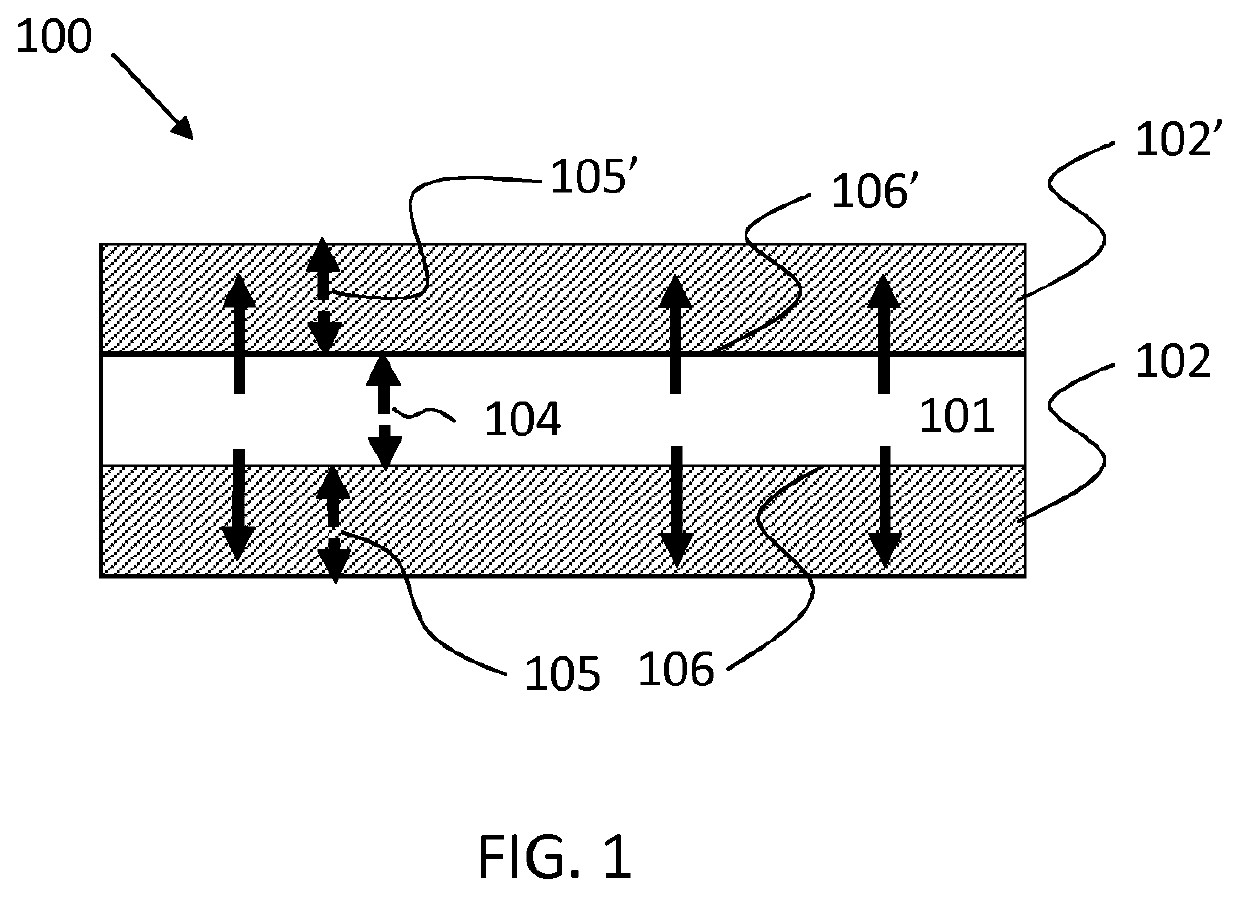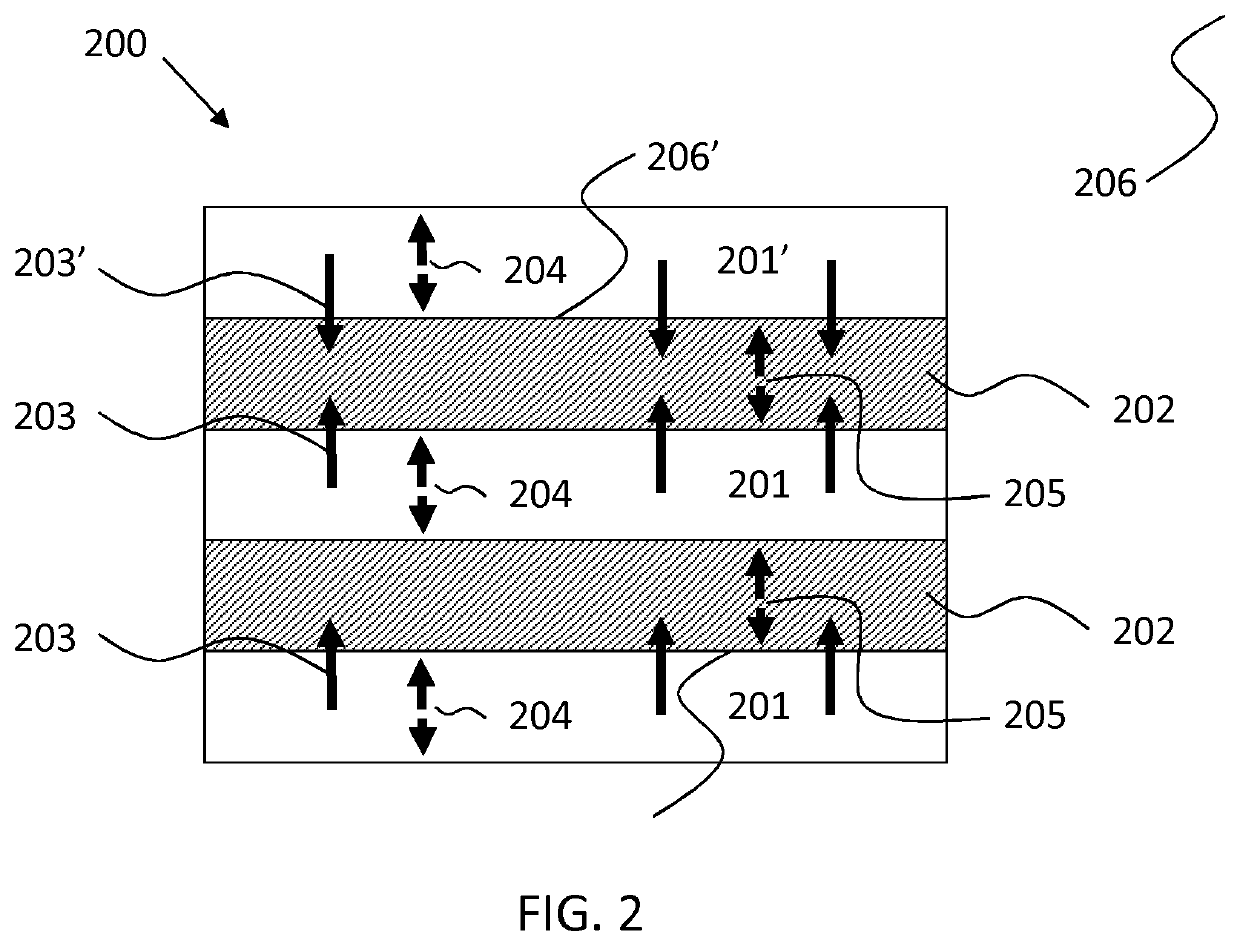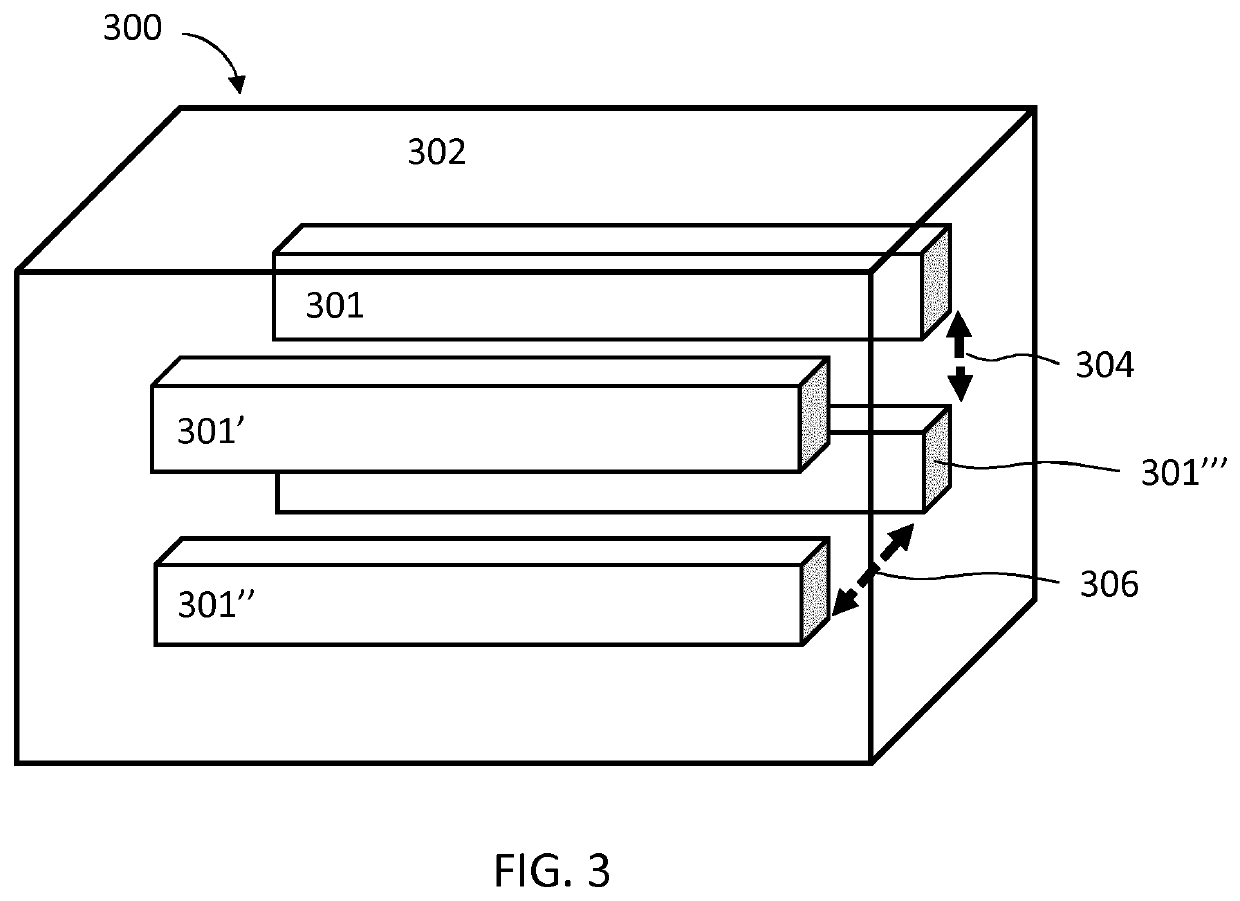Actuator device, actuation method and manufacturing method
a technology of actuators and actuators, applied in the direction of generators/motors, machines/engines, synthetic resin layered products, etc., can solve problems such as negated deformation
- Summary
- Abstract
- Description
- Claims
- Application Information
AI Technical Summary
Benefits of technology
Problems solved by technology
Method used
Image
Examples
Embodiment Construction
[0042]The claims define an actuator device comprising an actuation structure that can provide actuation based on the presence of a photoresponsive portion which, when it receives actuation light, can deform and a light guiding layer, i.e. a light guide for guiding and providing the actuation light to the photoresponsive layer. The actuation structure is constructed such that the photoresponsive portion is illuminated more efficiently than a photoresponsive portion of the same volume and incorporated in an actuation structure. Hence, an improved actuation output (stroke and / or strain) can be obtained with a particular volume of photoresponsive portion.
[0043]Whilst the layers closer to the light source will deform more than those further away due to attenuation of the light as it passes through progressively more layers, deformable non-photoresponsive layers (light guiding layers) are provided which partition adjacent photoresponsive layers. They guide unabsorbed light between the lay...
PUM
| Property | Measurement | Unit |
|---|---|---|
| thickness | aaaaa | aaaaa |
| thicknesses | aaaaa | aaaaa |
| thicknesses | aaaaa | aaaaa |
Abstract
Description
Claims
Application Information
 Login to View More
Login to View More - R&D
- Intellectual Property
- Life Sciences
- Materials
- Tech Scout
- Unparalleled Data Quality
- Higher Quality Content
- 60% Fewer Hallucinations
Browse by: Latest US Patents, China's latest patents, Technical Efficacy Thesaurus, Application Domain, Technology Topic, Popular Technical Reports.
© 2025 PatSnap. All rights reserved.Legal|Privacy policy|Modern Slavery Act Transparency Statement|Sitemap|About US| Contact US: help@patsnap.com



